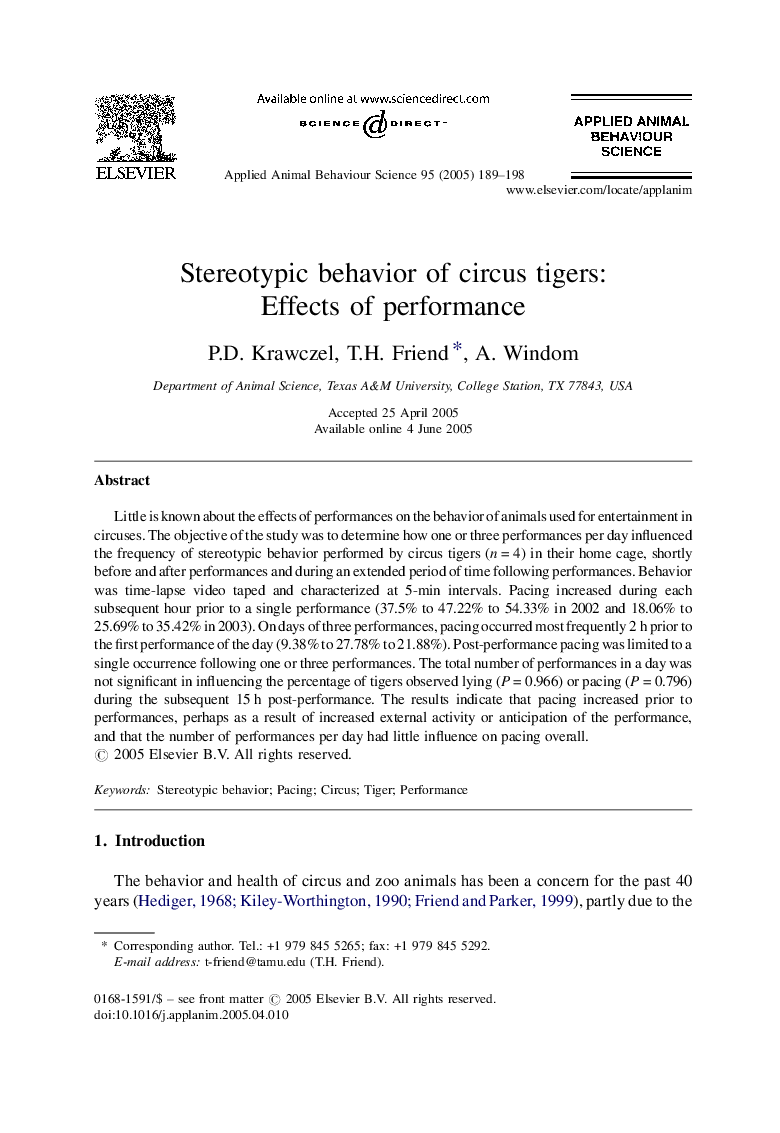| Article ID | Journal | Published Year | Pages | File Type |
|---|---|---|---|---|
| 9475830 | Applied Animal Behaviour Science | 2005 | 10 Pages |
Abstract
Little is known about the effects of performances on the behavior of animals used for entertainment in circuses. The objective of the study was to determine how one or three performances per day influenced the frequency of stereotypic behavior performed by circus tigers (n = 4) in their home cage, shortly before and after performances and during an extended period of time following performances. Behavior was time-lapse video taped and characterized at 5-min intervals. Pacing increased during each subsequent hour prior to a single performance (37.5% to 47.22% to 54.33% in 2002 and 18.06% to 25.69% to 35.42% in 2003). On days of three performances, pacing occurred most frequently 2 h prior to the first performance of the day (9.38% to 27.78% to 21.88%). Post-performance pacing was limited to a single occurrence following one or three performances. The total number of performances in a day was not significant in influencing the percentage of tigers observed lying (P = 0.966) or pacing (P = 0.796) during the subsequent 15 h post-performance. The results indicate that pacing increased prior to performances, perhaps as a result of increased external activity or anticipation of the performance, and that the number of performances per day had little influence on pacing overall.
Related Topics
Life Sciences
Agricultural and Biological Sciences
Animal Science and Zoology
Authors
P.D. Krawczel, T.H. Friend, A. Windom,
